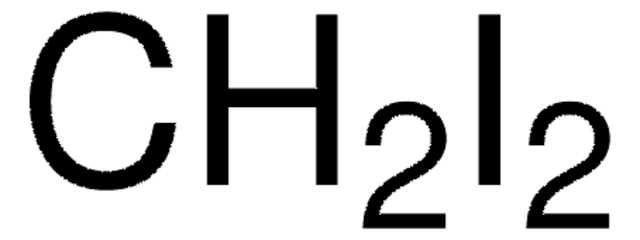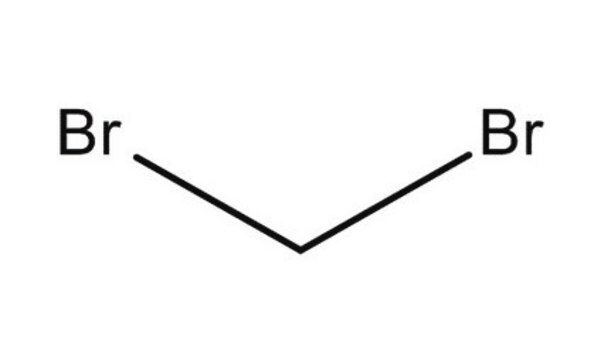おすすめの製品
蒸気密度
4.5 (vs air)
品質水準
蒸気圧
117 mmHg ( 20 °C)
アッセイ
≥99.5%
フォーム
liquid
含む場合があります
100 ppm BHT as inhibitor
屈折率
n20/D 1.482 (lit.)
bp
68 °C (lit.)
mp
−88 °C (lit.)
密度
1.991 g/mL at 25 °C (lit.)
官能基
bromo
chloro
SMILES記法
ClCBr
InChI
1S/CH2BrCl/c2-1-3/h1H2
InChI Key
JPOXNPPZZKNXOV-UHFFFAOYSA-N
類似した製品をお探しですか? 訪問 製品比較ガイド
詳細
アプリケーション
シグナルワード
Danger
危険有害性情報
危険有害性の分類
Acute Tox. 4 Inhalation - Eye Dam. 1 - Ozone 1 - Skin Irrit. 2 - STOT SE 3
ターゲットの組織
Respiratory system
保管分類コード
6.1C - Combustible acute toxic Cat.3 / toxic compounds or compounds which causing chronic effects
WGK
WGK 2
引火点(°F)
Not applicable
引火点(℃)
Not applicable
個人用保護具 (PPE)
Eyeshields, Gloves, type ABEK (EN14387) respirator filter
適用法令
試験研究用途を考慮した関連法令を主に挙げております。化学物質以外については、一部の情報のみ提供しています。 製品を安全かつ合法的に使用することは、使用者の義務です。最新情報により修正される場合があります。WEBの反映には時間を要することがあるため、適宜SDSをご参照ください。
労働安全衛生法名称等を表示すべき危険物及び有害物
名称等を表示すべき危険物及び有害物
労働安全衛生法名称等を通知すべき危険物及び有害物
名称等を通知すべき危険物及び有害物
Jan Code
135267-5ML:
135267-500G:
135267-100G:
135267-500ML:
135267-2L:
135267-BULK:
135267-VAR:
135267-5G:
135267-100ML:
135267-2KG:
この製品を見ている人はこちらもチェック
プロトコル
US EPA Method 8260: GC Analysis of Volatiles on SPB®-624 after Purge & Trap using "K" Trap, Fast GC Analysis
ライフサイエンス、有機合成、材料科学、クロマトグラフィー、分析など、あらゆる分野の研究に経験のあるメンバーがおります。.
製品に関するお問い合わせはこちら(テクニカルサービス)












